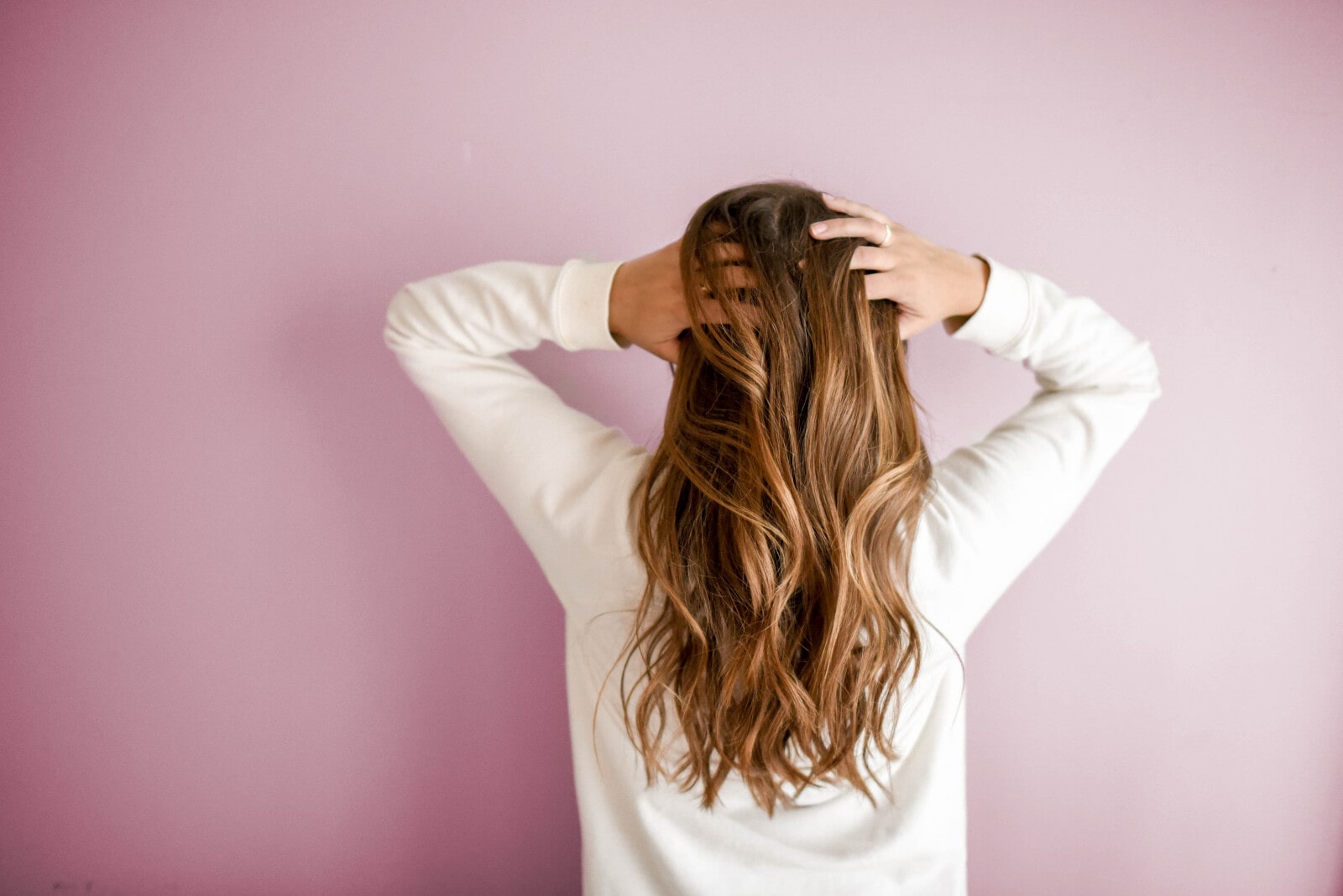lifestyle
Protein Treatment for Hair: Everything You Need to Know
On This Page

Protein treatments can feel like a spa visit for your hair. Get all the dirt on the best ways to keep your hair healthy and happy right here.
What are protein treatments and how do they work?
Protein treatments help to maintain the strength and health of natural hair that may be heat-damaged, chemically-treated, experiencing breakage, split ends, weak strands, or the rigors of being constantly manipulated. They are formulated to create a layer of protection for your hair as they fill any holes or gaps in the hair’s damaged cuticles. For natural hair, regular protein treatments can help improve overall manageability while strengthening your curls, which are more susceptible to dryness, breakage, or more general damage than any other hair textures. It is important to find the right protein treatment for the condition of your hair. It’s also important to remember that protein treatments aren’t a permanent fix; they should be used on a consistent basis.
Types of protein treatments
Protein treatments range from DIY home treatments to deep, complex processes done in a salon by a certified professional. It’s all based on your need, commitment to the process, and, of course, your budget.
There are a multitude of DIY treatments that involve mixing ingredients like honey and yogurt, (though Greek yogurt on its own is purported to be an excellent treatment), or avocado and banana, that are then combined with an avocado, almond, or coconut to be slightly heated and left in your hair for a specific time usually between 20 minutes and overnight.
There are also conditioning treatments that require you to leave the conditioner in for a specific period of time before washing out. These may contain proteins that have been made water-soluble so they can coat your hair, providing both hydration and protection.
Bond builders claim to restore bonds that may have been broken due to damage resulting from heat styling, UV rays, coloring hair, or general wear and tear from brushing. Some are intended to be applied prior to shampooing, left in for a specific period of time, then rinsed out, while others may be left in for extended treatment.
After treating chemically damaged hair with a recombinant K31 keratin treatment, this study found a significant improvement in the damaged hair, concluding that K31 keratin treatment offers great potential in the development of hair care and styling products.
Difference between a protein treatment and a keratin treatment
Technically, a keratin treatment is a type of protein treatment, but it is a very different process than the typical protein treatment. A keratin treatment is an hours-long process done by a trained professional in a salon, using high heat and chemicals for the end result of softer, shiny, well-nourished, straightened hair. The typical protein treatment usually involves the application of a treatment product, whether homemade, off-the-shelf, or at a salon, leaving it in for a specified period of time, rinsing, and you’ve finished nourishing your hair. Keratin treatment can be an expensive process, while other protein treatments can be done with products you can find in your kitchen.
Hair is primarily made up of a protein called keratin. Keratin can be found all over the body as a structural protein that helps maintain healthy hair as well as skin and nails. In addition to topical treatments, you can also consider oral supplements to support your hair health. This randomized double-blind placebo controlled clinical trial reported significant health benefits in participants who took 500mg of keratin over a 90 day period. Although the results may not be instant, integrating protein treatment with keratin supplementation can be a great way to support hair health inside and out.
How long do protein treatments last?
The length of time your treatment takes depends on the type of treatment you are receiving. If it’s a home treatment, it may take anywhere from 20-45 minutes for the protein product to soak into your hair follicles, followed by whatever time it takes to rinse. If it’s a DIY process, you need to add the time it takes for you to make the protein treatment, put it in your hair, let it soak into your follicles, rinse, and clean up your kitchen. If it’s an in-salon treatment, it could take anywhere from 2 to 6 hours, the latter being for the more complicated keratin treatment. Some home treatments suggest you leave the product in your hair for 24 hours, though the actual time spent on putting the treatment in and rinsing when finished is relatively short.
Which hair types benefit from protein treatments?
Any hair that has been colored recently would definitely benefit from a protein treatment. The chemicals elevate the pH of the hair, which causes the cuticles to rise. The longer the cuticles are raised, the more your hair is exposed and susceptible to protein loss and damage. The type of hair doesn’t matter when it comes to protein treatment. All hair needs two things: protein and moisture. You’ll know when your hair isn’t getting enough of either one. When in doubt, ask your stylist. You want to avoid too many protein treatments as that could easily result in dry, brittle hair.
How to know if your hair needs protein treatments?
If your hair is porous, limp, shedding, has been recently colored, or has low elasticity, you likely need protein. Highly porous strands have gaps and tears in them that expose the cortex to environmental elements, potentially resulting in tangled, frizzy hair. Protein is required to seal the gaps and tears, thereby strengthening the strands. If you have been subjected to the elements (sun, wind, snow, smog, fog, etc.), you may need regular protein treatments. If your hair is frequently styled, processed, or pulled in a bunch of different directions in the name of fashion, you, too, may need regular protein treatments. Many athletes, especially swimmers, have damaged hair that desperately needs protein treatments – especially if there has been chlorine exposure. The bottom line is, ask your stylist to help you determine what, if any, treatment your hair needs to keep it healthy.
Are protein treatments safe to use? What about long-term use?
Protein treatments are considered safe, though it is important to read labels and watch for toxic chemicals. Certain keratin treatments contain formaldehyde, a well-known toxin that can cause irritation to the skin, throat, and eyes. There are now formaldehyde-free keratin treatments that you may want to explore. Long-term use of protein treatment is recommended, as damage can be an ongoing issue, especially for those who color, treat, heat, and generally work their hair on a regular basis. Ongoing treatment helps repair your hair and protect it from additional damage.
How to use protein treatments
Selecting the proper protein treatment is key to getting the maximum benefits from it. Decide whether you are going to do it at home or go to a salon. There are benefits of each, including time, money, motivation (how badly you need it), convenience, and your level of commitment to the ongoing process of protein treatments. So much of how to use them depends upon these choices. If it’s a DIY home treatment, follow the instructions on the package. They usually include washing your hair, applying the product, covering your hair, applying heat (sometimes), and after 20-40 minutes rinsing your hair out. The more detailed the process, the more time, effort, and often money, you have to invest. The choices are always yours, but it never hurts to consult your hairstylist about your needs.
Which ingredients you should stay away from
You should always look at the labels and be wary of toxic ingredients, especially formaldehyde, which is a common ingredient in the products used in many salon treatments. Feel free to ask about formaldehyde-free processes. If you’re going to use the treatments with formaldehyde, insist that your stylist take every safety precaution to ensure you are not inhaling or ingesting it. Most stylists will use masks, gloves, a well-ventilated area and never come closer than 2-3 inches from your scalp.
Can you use too much of a protein treatment?
Too many hair protein treatments are not difficult to see. If the look and texture of your hair changes, it might be a sign of too much protein treatment. Your hair may also look and feel dull, dry, and brittle, and you might notice an increase in split ends and amount of shedding, especially in your brush.
How often should you use a protein treatment?
This is a decision that should be made on an individual basis. Generally, the intense salon protein treatments done by a licensed professional are done every 4-6 weeks. The home products of DIY treatments all come with instructions as to how often it should be done. Speak with your stylist about the best timing for you, and learn what to be on the lookout for in terms of over- or under-treating your hair.
How to apply a protein treatment
The application of a protein treatment is specific to the type of treatment you have chosen. There are clear instructions on the package of every protein treatment product. They typically involve washing your hair, applying the product, and either applying some heat or just waiting a predetermined period of time before you rinse. Some may call for you to wrap your hair for a period of up to 24 hours before you rinse.
Benefits of protein treatments for hair
May strengthen hair
Protein is the foundation of hair. Treating it or replacing damaged protein at the follicular level will help to strengthen all of your hair.
Aids in repairing and protecting your hair from damage
Protein treatments will harden the cuticle at the hair follicle, protecting it, and ultimately your hair, from further damage.
Boosts hair elasticity
When your hair is lacking protein, it will stretch longer before breaking. A protein treatment can help restore your hair’s elasticity, resulting in hair that stretches and bounces back.
May reduce split-ends and breakages
Increasing the elasticity of your hair will also manage the amount of split ends and breakages you have, leaving you with hair that looks – and feels – healthy.
Helps improve appearance of your hair
Protein treatments will improve the density, strength, and elasticity of your hair, as well as lessen the breakage, damage, and split ends. The results will be healthier, better looking hair.
Best protein treatments for hair
There is no one best protein treatment for hair. The best treatment for you depends on your individual needs at the time. Ideally, it is always best to consult your hairstylist, as they will help you find the best option given variables like time, money, and commitment to the process. While the intense salon treatments may be just what the stylist ordered for some, a DIY or home treatment may be all you want or need. It’s an individual choice based on preferences and needs.
DIY protein treatments at home
The internet has enough DIY protein treatments to keep a person busy for a very long time. While many of them may be effective, or worst case scenario harmless, know what you’re getting into. You could be called upon to heat coconut milk, chop fruit, buy essential oils, or any number of things that you might not need to be doing. If you choose the off-the-shelf treatments, follow the instructions carefully, and follow the suggested timeframe to avoid over- or under-treating your hair.
Final takeaways
Protein treatments for your hair work. That’s why they’re so popular. We live in a world of sun-ravaged, heat-damaged, chemically-processed, multi-colored hair that we contort into a seemingly endless number of styles that require all kinds of lacquered products to keep them in place. Protein treatments have been formulated to create a layer of protection for your hair as it fills in any holes or gaps in its damaged cuticles. Regular protein treatments are like a spa treatment for your follicles. Your job is to find the best possible treatment for your hair, whether it's a long, intense treatment by a licensed professional at a fancy spa, something you do on your own at home, or something in between. A reputable hairstylist can help you make the perfect choice for your hair. Just make sure you don’t overdo it with the protein treatments – there is such a thing as too much of a good thing.



